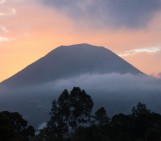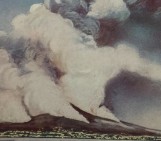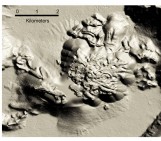Today sees the launch of a project that I have been working on for the past few months – with the release of a short YouTube animation which explores processes in subduction zones. This is a part of a larger-scale public engagement activity called OxfordSparks which has been coming together over the past eighteen months. This project has brought together a great creative team from across Oxford (with experience ranging from crowd-sourced science, life-long learning, outreach and education to script writing, sound production and digital media), linked by a common interest in public engagement with science. From the outset, the aim of the project was to use short YouTube animations to draw people in to find out a bit more about topics in science. These short films are intentionally quirky, animated brilliantly by a science graduate and professional illustrator, Karen Cheung, and designed to stand alone.
From the outset, we thought quite hard about how to make a series of science animations that were on the one hand entertaining, and on the other hand educational; on the one hand, having some visual elements that linked the animations to each other, while on the other, being able to seen as a ‘stand alone’ video that is not labelled as ‘Science’. At the same time, we needed to be able to cover the scales of length and time that might be encountered across a wide spectrum of science topics. Whether we have succeeded remains to be seen, but and our solution was to have an innocent bystander, a green ‘popsicle‘ called Ossie, who would stagger haplessly into the experiment of the day. So far, Ossie has been shrunk to the size of a proton and accelerated to close to the speed of light in the Large Hadron Collider; taken a trip towards absolute zero through interstellar space; and investigated the genetic basis of hypertrophic cardiomyopathy (a common cause of sudden cardiac death in the young) and the workings of the human heart.
For the volcano animation, I wanted to follow the pathways of water molecules in subduction zones: from mineral transformations in the down-going slab, through dehydration and release from the slab at depth, to the control on melting within the mantle wedge and concluding with a mildly explosive eruption. The location for the scenario also took a little thought. We wanted somewhere that is perenially active (to avoid the sensitivities of locating it somewhere that might not be active); and at the same time, we wanted a region where there has been enough work completed so that the nature of the subduction zone and the structure of the volcano plumbing system are fairly well known. Stromboli fits the bill really very nicely: it has been very well studied, and continues to be very closely monitored; and the Calabrian arc, although not typical in some respects (for example, the rapid rate of roll back or retreat of the subduction hinge; and the very old nature of the subducting oceanic crust), has nonetheless been very well characterised. Coupling that with some recent ideas for the way that serpentinisation might be enhanced near the trench due to bending of the slab, and with some visual impressions of how melt moves in the mantle, and we were ready to go. Ewan Kilgour quickly came up with a script that managed to convey the essential science within an entertaining storyline, and Karen Cheung provided the visual interpretation of the script, which was completed late last week. The soundtrack was laid over the past weekend by John Halliday, along with a narration by Ed Byrne, whose love of volcanoes was recently revealed on BBC’s ‘volcano live‘.
[youtube=http://www.youtube.com/watch?feature=player_embedded&v=ms2ZhSZ4t2o]
In due course, we will release a set of teaching exercises appropriate for a range of age groups to go with the animation; but the for the time-being viewers will have to be content with a short list of links to a range of resources on volcanoes. Enjoy – and do let us know what you think of it!




Jesse
It’s very nice how scientific information is made compact andere very understandable though thuis video. Very nice and certainly a movement which needs to go on in the future. Good job
To make science even more accessible I’d put in a link at the end of the video leading to some more information for the curious.
davidmpyle
Thanks Jesse – yes, thanks for spotting this. I’ll get a link to http://www.oxfordsparks.net on there!
Jesse
Great! Could you specify the link so that the viewer can immediately go to the info about volcanoes? I went to the site and it requires some time and effort to arrive at the related info. This will probably be the experience of the target audiencenas well.